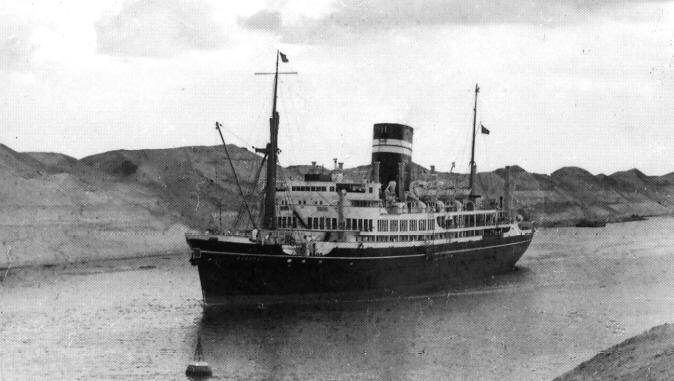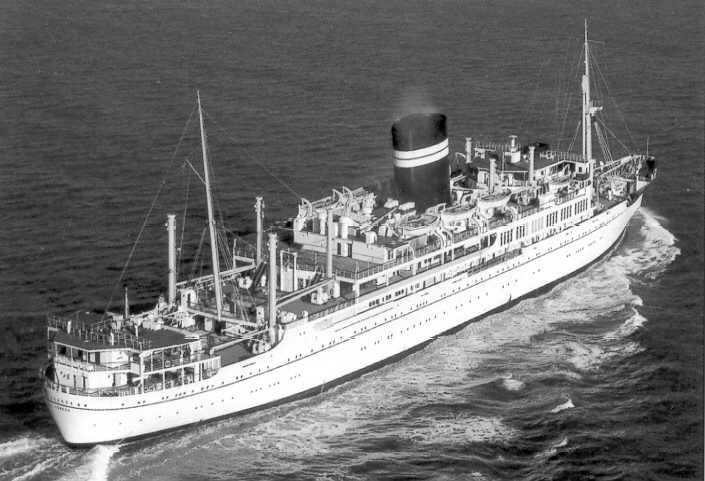How to order your copy of the SS Uganda book or SS Nevasa book

SS Uganda, with the Holy Loch and Argyll Hills behind her, about to commence her sea trials on the 15th July 1952. The following day she achieved a speed of 19.245 knots on the Skelmorlie Measured Mile. Source: Courtesy of Jim Mackintosh Photography.
In 1947 the British India Steam Navigation Company Ltd. (known as B.I.) ordered two passenger-cargo liners for their UK-East Africa service from Barclay, Curle & Company Ltd. to be built at their Clydeholm shipyard. These liners were to be named Kenya and Karatina, but B.I. requested that the latter be changed to Uganda in 1949.SS Kenya was completed first and entered service on the 25th August 1951. SS Uganda was launched on the 15th January 1952 by Lady Hall, wife of Sir John Hathorn Hall, Governor of Uganda from 1944 to 1951. SS Uganda entered service on the 2nd August 1952 under the command of Captain Clive Polkinghorne. The maiden voyage was to Beira via the Suez Canal, Aden, Mombasa, Tanga, Zanzibar and Dar-es-Salaam. She returned to London via the reverse route with additional calls at Malta, Marseilles and Gibraltar.

SS Uganda passes sedately through the Suez Canal in 1954. Passage would be in convoys of around twenty ships, with one convoy each day in each direction. Source: Courtesy of Ambrose Greenway.
The round voyage to East Africa took around 61 days and the two sisters each completed four voyages a year. Itineraries varied little excepting in 1956/7 following the Suez crisis when it was necessary to take the longer route round the Cape. In addition there was a period in the 1960's when the route was extended to Durban. Both ships sailed full on most voyages until the mid 1960's and if there were any criticism of the ships then it would be about the lack of air conditioning.However, a combination of changes brought about an abrupt end of the East Africa service for B.I. and also for a number of other companies. These changes included industrial unrest in the ports, the introduction of containerisation for cargo, independence of the East African states and the success of the jet aircraft for passenger transport. The SS Uganda completed her final voyage in January 1967 and then went to Hamburg for conversion to an educational cruise liner. The SS Kenya continued serving East Africa until June 1969 and was scrapped in Italy the following month. Alas the opportunity for expatriates to enjoy a relaxing ocean voyage with B.I. before or after a period of duty in Africa was over.
